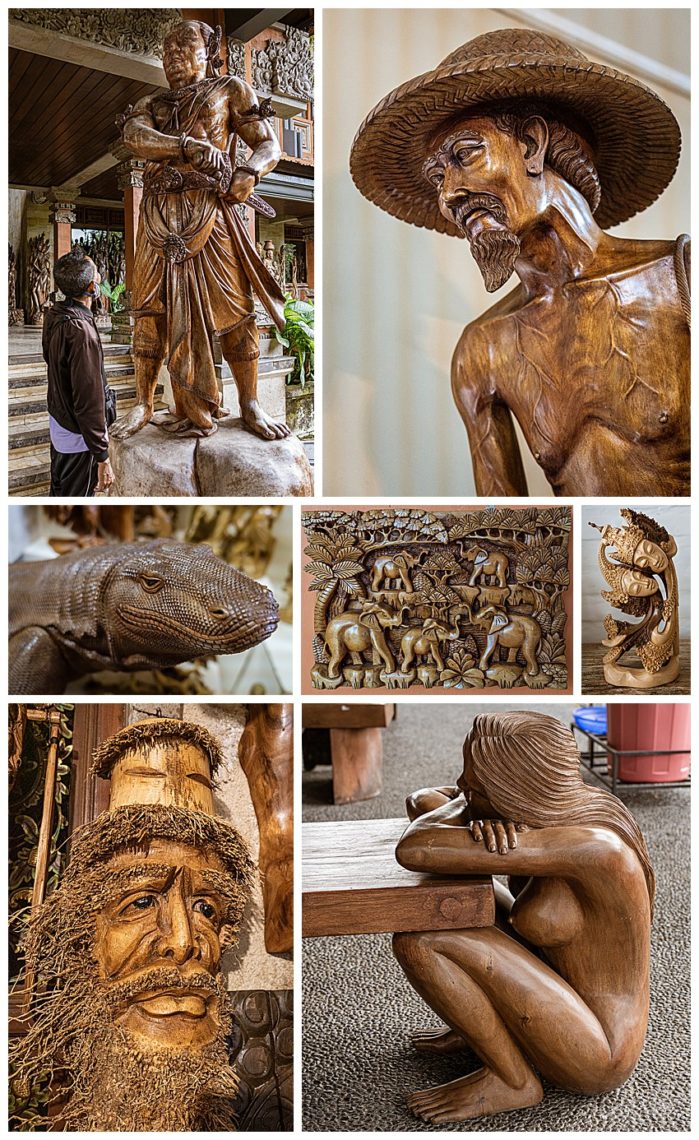
Ubud is known as the cultural capital of Bali. There are many traditional villages surrounding Ubud which specialize in creating Balinese art from jewelry making, batik, wood and stone sculpting, to painting. In the interiors of where we stayed, there were many wood sculptures and furniture with intricately carved details. We hired a driver to take us on a tour to see the artists and craftsman in action.
Carving wood sculptures is a skilled craft. Balinese use a hard wood such as teak, jack fruit, balul or Ballwood to make their carvings. Prior to the Covid shutdown, many of the art galleries had become targeted for tourists. As a result, the art pieces for sale are mostly shown in US dollars, rather than the Indonesian Rupiah.
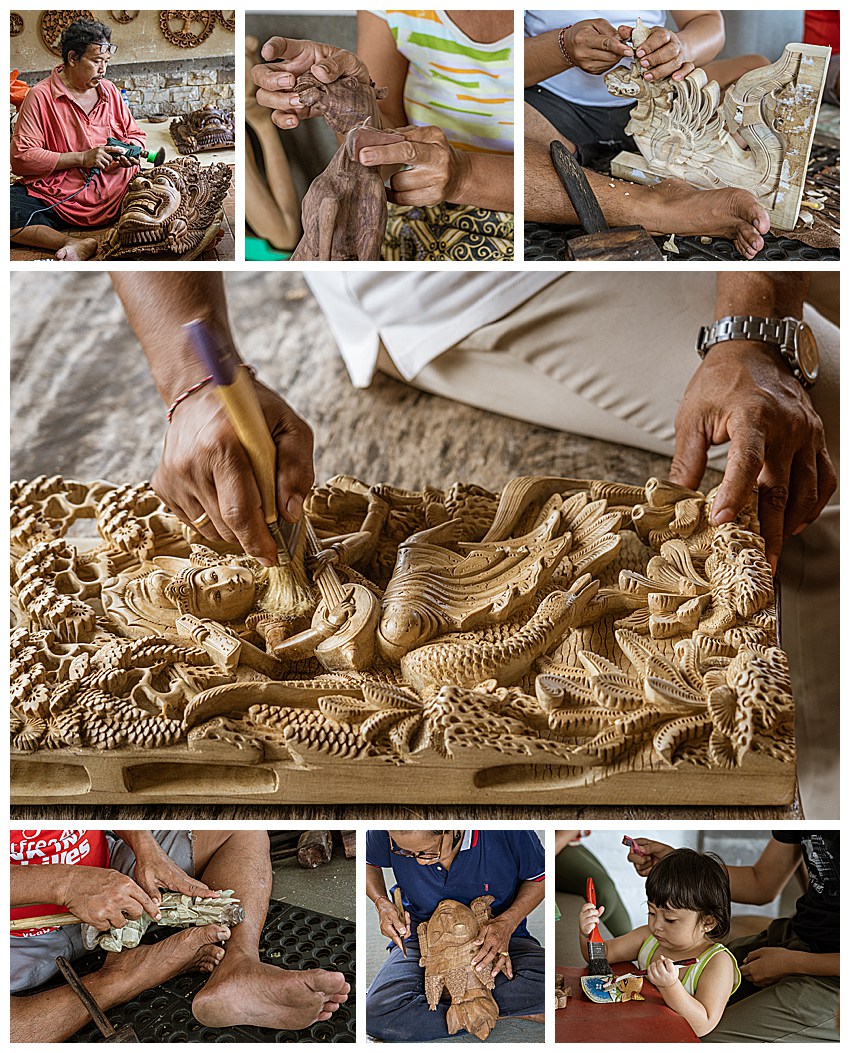
If you were to watch a wood worker in the Western World, you would see a series of saw horses and vices to hold the material as it was worked. Not here though. The artists sit cross-legged on the floor, using their feet as a “third hand” to manage the material as they lean over it and carve into their intended design. The range of tools used are simplistic, and very often passed down through the generations (lower-right).
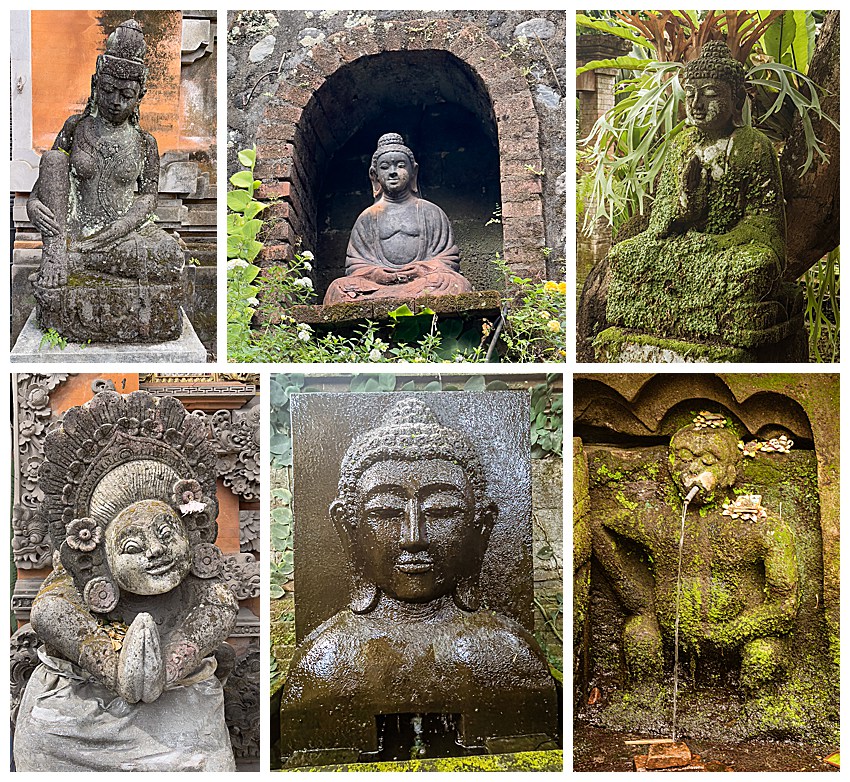
When walking around Ubud, we also found thousands of stone statue decorations, both outdoors and indoors. These included different forms of buddhas, various Hindu gods, animals, flowers, and many others, all found pretty much everywhere you turned. Some of the statues were white in color, some were black, others aged with moss. We wanted to see the skilled artists creating these intricate art pieces.
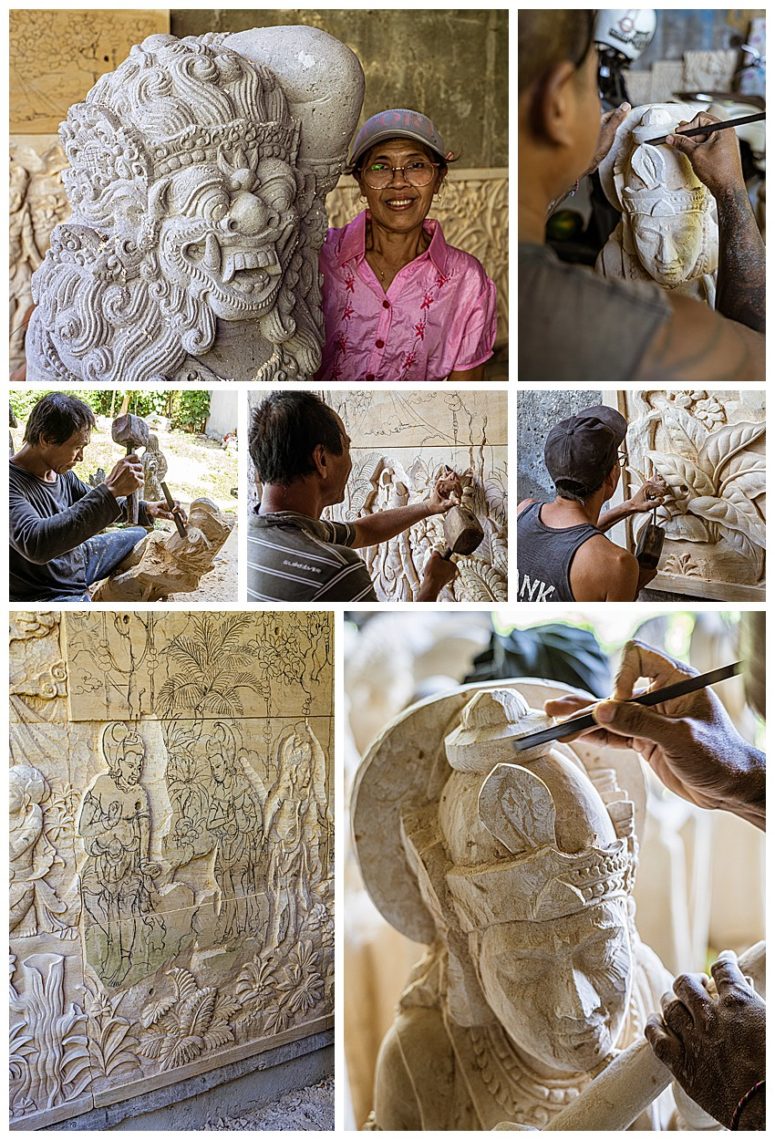
Our driver took us to several stone carving factories. We found that many of the factories did not have craftsman working on site when we arrived. The showrooms had large inventories and the artists only came to work if they had commissions or specific projects. Fortunately our driver was able to seek out shops where we had a chance to watch some artists at work, as well as meet the owners to hear their stories. The owner (upper-left) of the stone carving gallery above has been in the business for eleven years, starting her career working for a business shipping containers for thirty years. Her artists were creating work for a buyer from India.
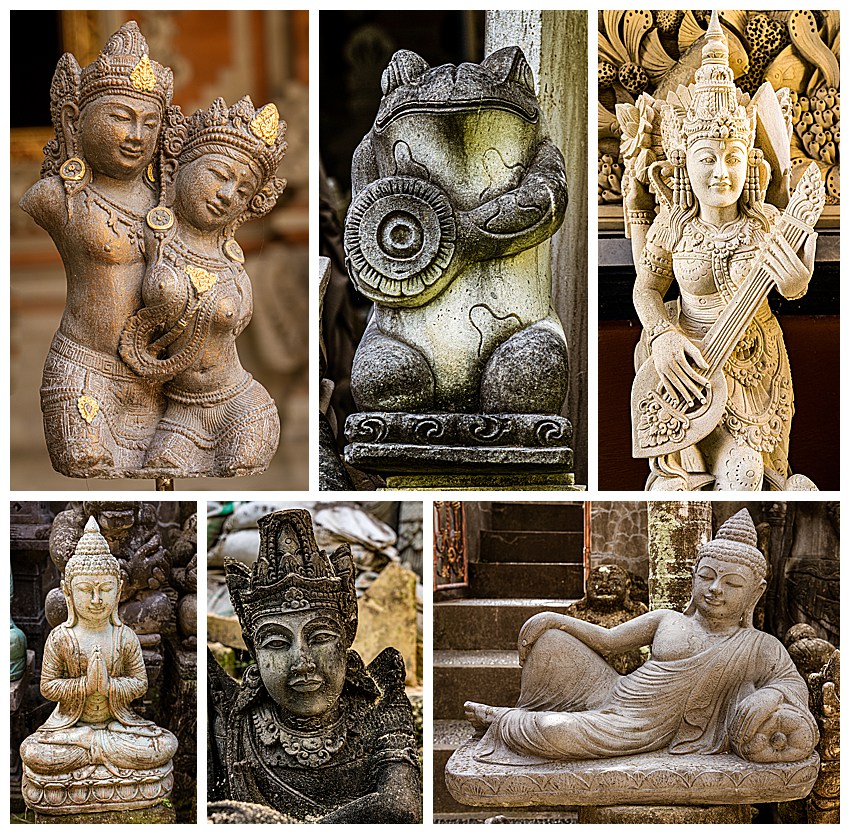
The stone statues are generally made from sandstone, so they are relatively easier to carve than rock. The white sandstone comes from Yogyakarta and the black sandstone comes from riverbeds in Bali. The white sandstone statues are the most prevalent around Bali. Over time, the statues oxidize and turn black. The statues generally last up to 20 years if left outdoors, at which point new ones are usually commissioned.
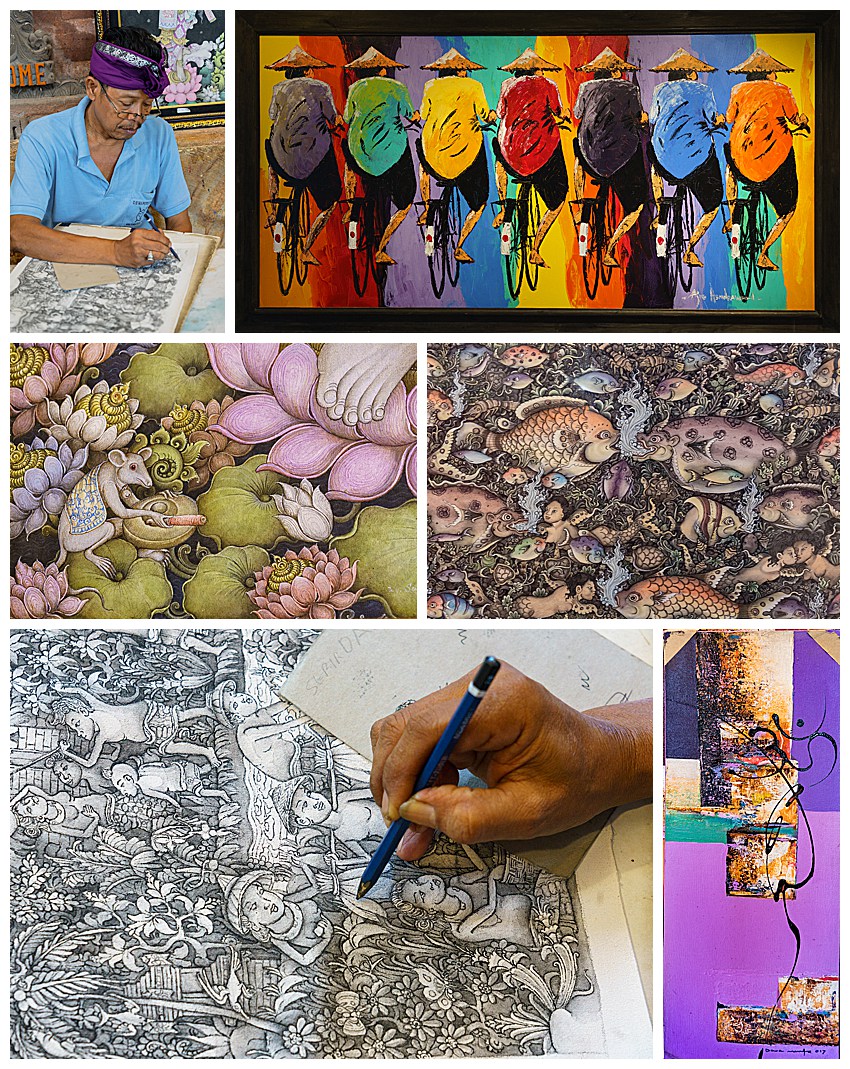
In Honolulu, Evelyn took a workshop from a Balinese teacher using the Batuan technique of gradations of of black to white washes with watercolor. Apparently, Batuan is the only village that specializes in this traditional Balinese painting style, and we had a chance to watch the artists in action (upper-left and lower-left). The gallery had both traditional Balinese art as well as modern art.
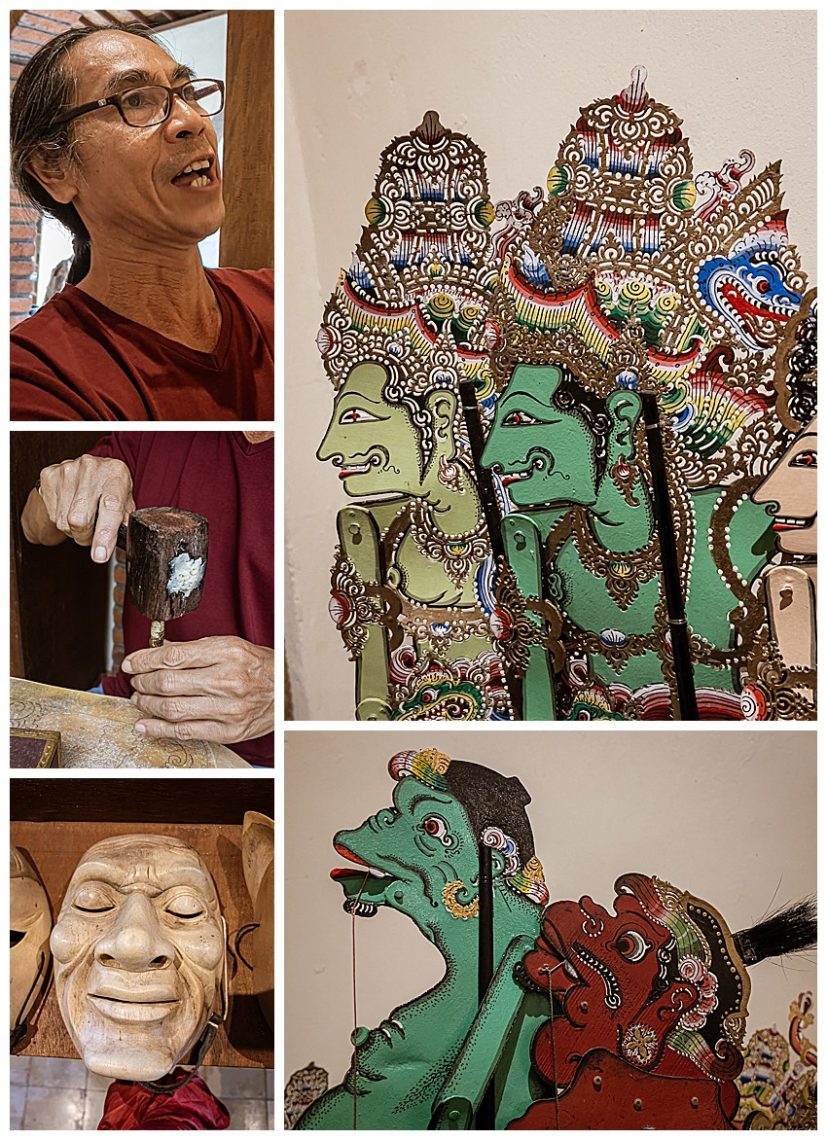
In Ubud there is a shadow puppet show and a gallery where the artist works. Oka Kartinii Ubud Art is an art school for other crafts as well. The puppet master makes puppets from thin sheets of leather, making lines with a punch, then coloring the leather. The process takes a lot of time as it is layered.